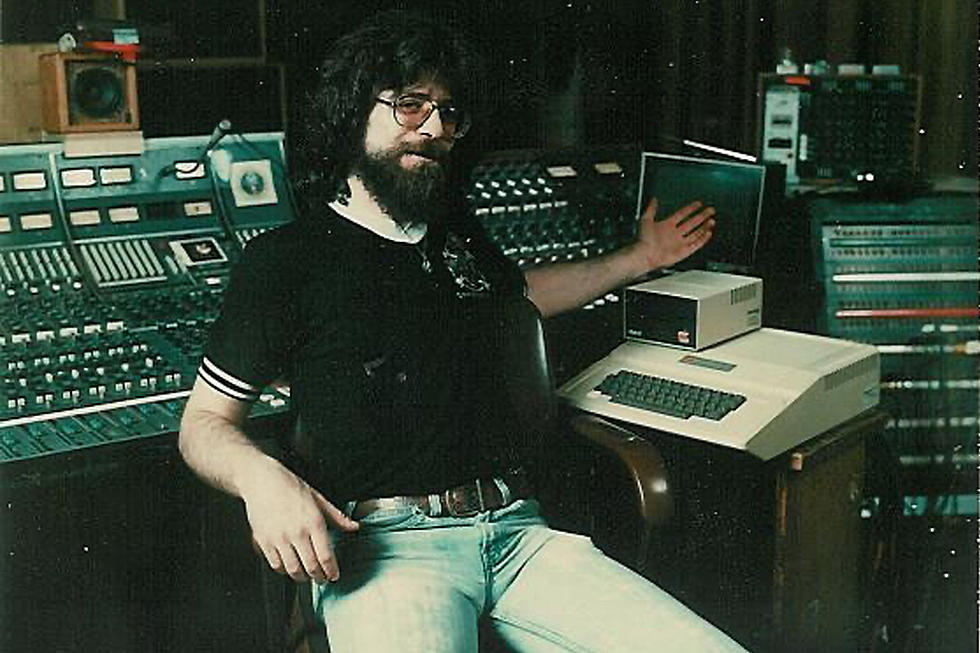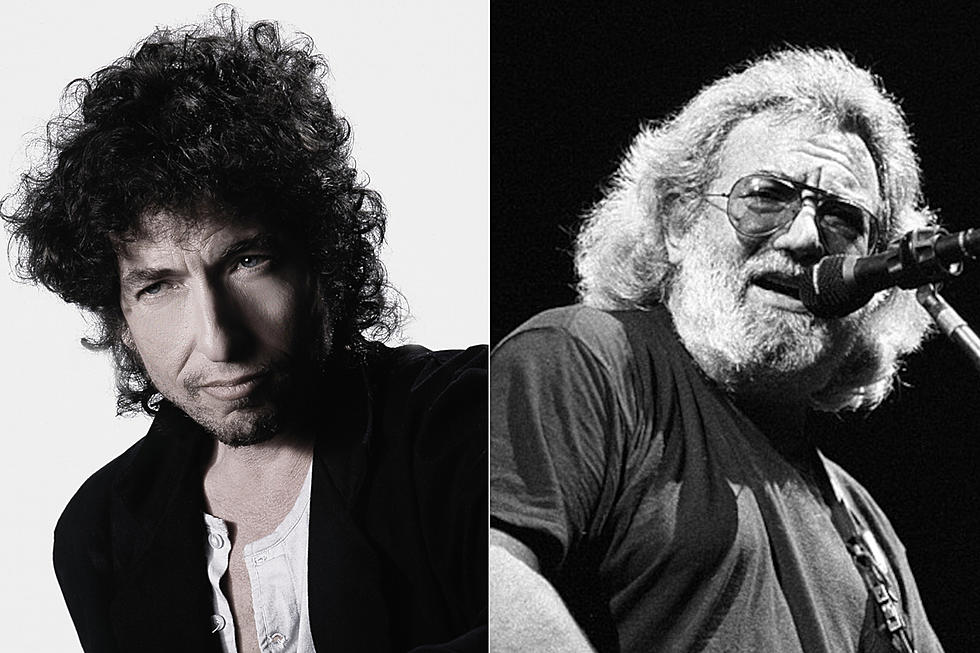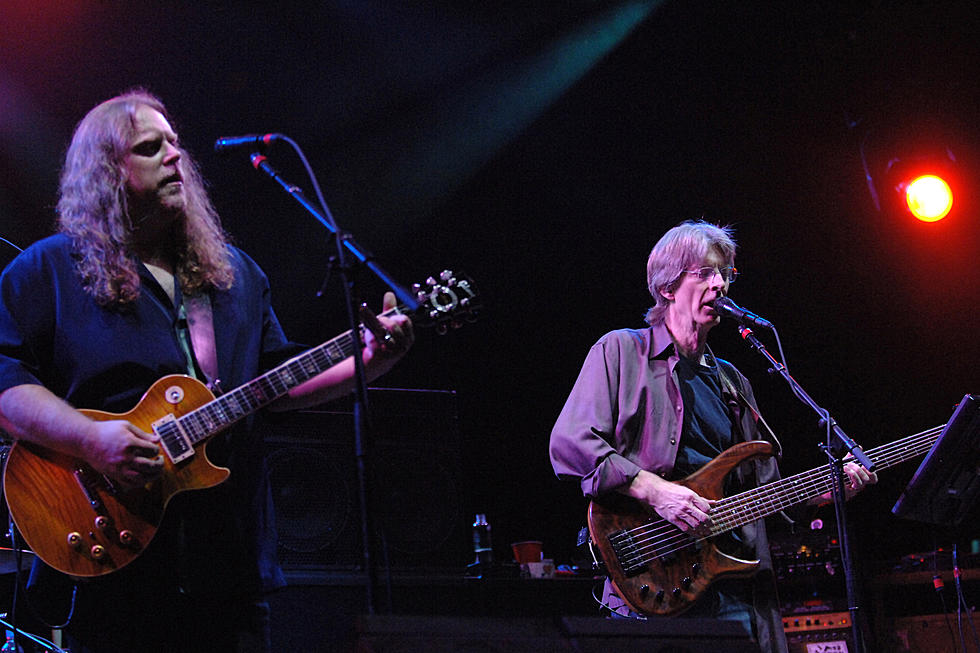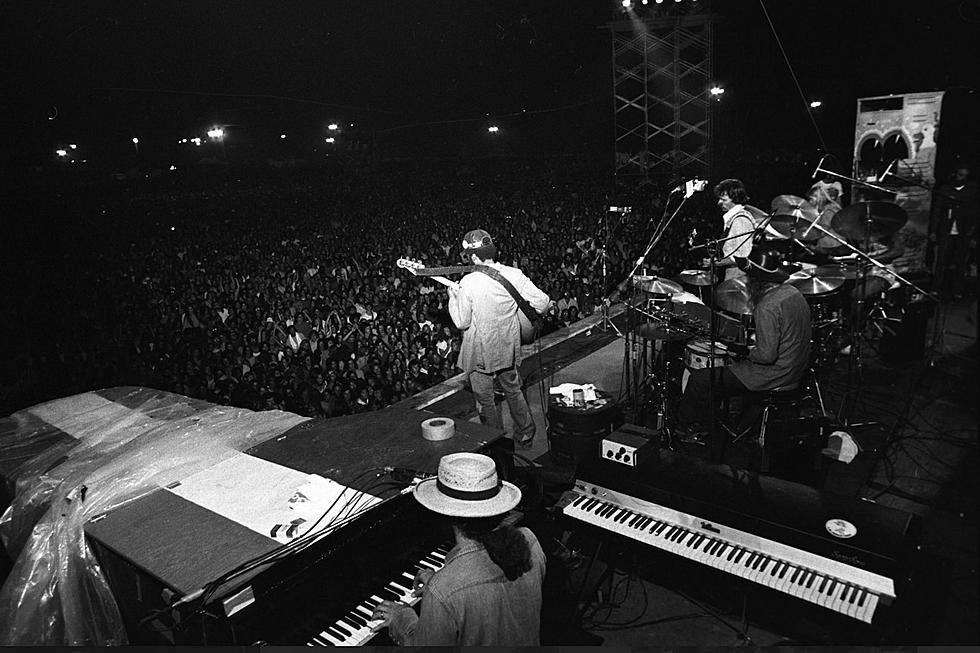
Bruce Hornsby on the Grateful Dead, Connecting with Trey Anastasio + Going Beyond His Hits: Exclusive Interview
Even if he had never played with the Grateful Dead, Bruce Hornsby would have had an impressive career.
On his own, the Virginia singer-songwriter and pianist landed a series of Top 40 hits and scored a triple-platinum album in The Way It Is. He penned Huey Lewis' “Jacob’s Ladder” and co-wrote the title track to Don Henley's The End of the Innocence. He performed on records by Bob Dylan, Stevie Nicks, Bob Seger and many more.
But he did play with the Grateful Dead. A lot. And he helped make their 50th anniversary event Fare Thee Well a rousing success. The five concerts tallied $52 million in box office receipts, and became the biggest music pay-per-view event ever with more than 400,000 cable/satellite subscriptions and online streams.
Back on the road with his own band the Noisemakers, Hornsby spoke to Ultimate Classic Rock about the Grateful Dead, his connection with Phish’s Trey Anastasio and getting beyond his ’80s hits.
You spent a lot of time with the Grateful Dead in the late ’80s and early ’90s, how would you compare the Fair Thee Well run to those earlier shows?
That’s a difficult question to answer because I played over 100 shows with them back in the day and the level was always a little erratic with the Grateful Dead. And the band are the first to admit this. Some shows were really on and some shows weren’t. Sometimes, the hair would stand up my arm; it was so transcendently great. There are other times where you’re going, “Well, huh, what can I do to pick this up a little bit?” Like I say, everyone knows this; this isn’t new. But to compare the Fare Thee Well with my other shows, it’s hard to do.
Certainly the shows seemed to be a success. Did they feel like that onstage?
There wasn’t much in these concerts that could be called bad. Personally, I could say I really blew this song or that song, but as a band I can’t really say that. Even the first shows in Santa Clara were great fun too. I thought Santa Clara had lots of great moments right from the beginning.
The fact that nothing went wrong is amazing in itself. But that all five shows were great is impressive. And this from a band who had never played together as a unit.
Well, yes that’s true, but besides Trey, everyone had a history together. Obviously, I played with the core four a lot, even if that was a long time ago. Jeff Chimenti played with the core four a lot recently. And Jeff and I connected so quickly. We were blood brothers in the corner over there. We were little kids fooling around, seeing what we could get away with in the back of the classroom. If you looked over at us we were laughing our asses off having a great time.
So, Trey Anastasio was the one big unknown, right?
Trey was the new guy and he was absolutely fantastic, and that was easily seen by everyone. So, it wasn’t so difficult becoming a band. Trey didn’t have the history but he’d had experience. He'd done some Phil [Lesh] and Friends gigs. Nobody was totally new to this.
Listening to your new compilation The Essential Bruce Hornsby, you can hear just how far you’ve progressed from those first hits. It ranges from Top 40 to folk and bluegrass to wild jazz excursions.
The fact that we had radio hits was really a fluke, an accident. You don’t have to listen that closely to hear the biggest influences of my career right in those early hits. They’re not as well-formed and frankly not was well-performed on that early music as they are now. But they’re there. You hear me soloing on “The Way It Is” not once but twice. Imagine a Top 40 hit with two jazz piano solos. Then the second hit has mandolin and accordion. Imagine that.
I love that the compilation puts those hits right up against more adventurous stuff.
Thanks. The Essential record also has three of the songs from my Ricky Skaggs collaborations, three from Spike Lee collaborations [Hornsby scored or wrote songs for six of Lee's movies], three songs that come from the Dead world. [Laughs.] It’s a disparate range, Spike, Scaggs and the Dead.
You may not have intended to write hits, but you did. And yet you never seemed to chase mainstream popularity. Did you ever want to?
In once sense, I did chase hits. On the second record, I tried to cement the sound I had become known for. I didn’t try for Top 40 but I tried for that sound, which frankly was me playing piano very freely over a drum machine and synth then we added fiddles and mandolins and accordions. But after album two, I was done with it. The third record I started ranging very far afield with all the guests. Jerry Garcia was on it. Shawn Colvin, Bela Fleck, Wayne Shorter, Charlie Haden were on it and you saw me really start reaching.
Did people ever pressure you to write singles? Did your fans understand where you were taking them?
When I didn’t call it Bruce Hornsby and the Range, people would say, “I really miss the old band sound.” It was hilarious because when they were referring to Bruce Hornsby and the Range, they were referring to four or five hit songs on the radio that were me playing along with a drum machine and me doing synth bass. It was a one-man show. What they meant is that they missed hearing my songs on the radio. But you put Wayne Shorter on a song, and pop and rock radio won’t play it.
OK, you’ve done so many collaborations, but after those Dead shows what I want to see is Phil Lesh and Friends with you and Trey or even an Anastasio-Hornsby tour.
[Laughing.] You know you’re not the first to suggest this idea?
Oh, I know but to see you two playing together was so delightful. I have got to have more.
Well, you could describe it as a delightful time together. We developed a great bond both musically and personally. He was talking to me a bit about doing something and I’m not – well, look at those collaborations on the Essential record. With the exception of Robbie Robertson of the Band, who I called up and told about this idea I had for a record he was doing that he might like, it has always been people calling me. They have been the catalyst. They came forward with the idea of collaboration. For instance, I played on Brandon Flowers' new record and I’m working with Justin Vernon from Bon Iver on a couple of different things. Those are new collaborations for 2015. But it’s always been about them calling me. So, we’ll see what happens. You’re not alone in that thought, though.
Grateful Dead Albums Ranked Worst to Best
Criminally Underrated Rock Albums
More From Ultimate Classic Rock









